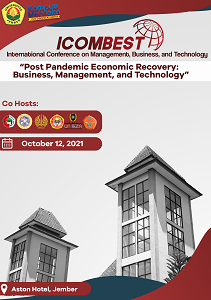CONDOM USE AMONG EXIT CLIENTS OF FEMALE SEXUAL WORKERS FOR PREVENTION HIV/AIDS IN MAKASSAR
Abstract
AIDS remains a public health problem of majorsignificance in most parts of the world [1]. According
to United AIDS Nation program on HIV/AIDS
(UNAIDS) global report published for the world AIDS
day 2012, about 34 (31,4-35,9) million people are
living with HIV[2]. Based on the data from
Directorate General CDC & Ministry of Health, in
2014 the number of cases HIV and AIDS in Indonesia
was 7.335 and 176 respectively. The most mode of
transmission is heterosexual. There were 34.305
cases with the mode[3]. Data from AIDS Commission
Makassar showed that in 2013, the number of HIV
cases in Makassar was 3.845 and AIDS 1.673 cases.
According to the data, Makassar ranked first in the
number of cases of HIV/AIDS in South Sulawesi
province
Clients of female sexual workers (FSWs) have risk to
be attacked by HIV. The clients (FSWs), also known
as the “bridge population”, act as a bridge between
the high risk group of FSWs and the general
population [4] .The higher number of clients of FSWs,
the higher spread of HIV/AIDS both in high risk group
and general population. Low condom use is trigger
of HIV/AIDS transmission. In 2014, rapid survey
result on FSWs in Makassar showed that condom
use has not reached yet 100%. Makassar AIDS
commission has conducted regularly socialization
HIV/AIDS to FSWs and approached to them, in order
to insist male clients to use condom. But, condom
use in male clients has not been maximal. This
survey was carried out to know characteristic exit
clients and determinant factors of condom. The
result of survey can be used as reference to crate
planning in controlling HIV/AIDS in Makassar.
Published
2017-01-27
How to Cite
ALWI, M. Akbar; YUSDALIA, Yusdalia.
CONDOM USE AMONG EXIT CLIENTS OF FEMALE SEXUAL WORKERS FOR PREVENTION HIV/AIDS IN MAKASSAR.
UNEJ e-Proceeding, [S.l.], p. 237-240, jan. 2017.
Available at: <https://jurnal.unej.ac.id/index.php/prosiding/article/view/3941>. Date accessed: 22 dec. 2024.
Section
General









